A command center for intercontinental ballistic missiles launch
12 underground floors built in case of a nuclear war… The 15V52U Integrated Command Center.
We made a trip to this once top secret site where the nuclear missile launch was to be carried out in case World War III starts.
Just to give you an understanding of its enormous size — here is the photo of its mock-up from the Ukrainian Strategic Missile Troops museum website.

The command center was used for monitoring and control of intercontinental ballistic missile launchers 15A35 (Nato codename: SS-19 Stiletto), thermal and humidity conditioning and protecting staff from injuring factors of mass destruction weapons.

The military base looks abandoned, the gate is open, but there are fresh tire tracks on the road. We come inside.

A wall of honor. This base guarded the peace for 40 years.

We are moving around the territory. From time to time we sink in the snow up to our waist and we almost fell into a vent shaft once.

Structure №5, “the operator room”. A building with no doors, just windows. You can see a hatch in the ceiling on the right, and there used to be stairs leading down.
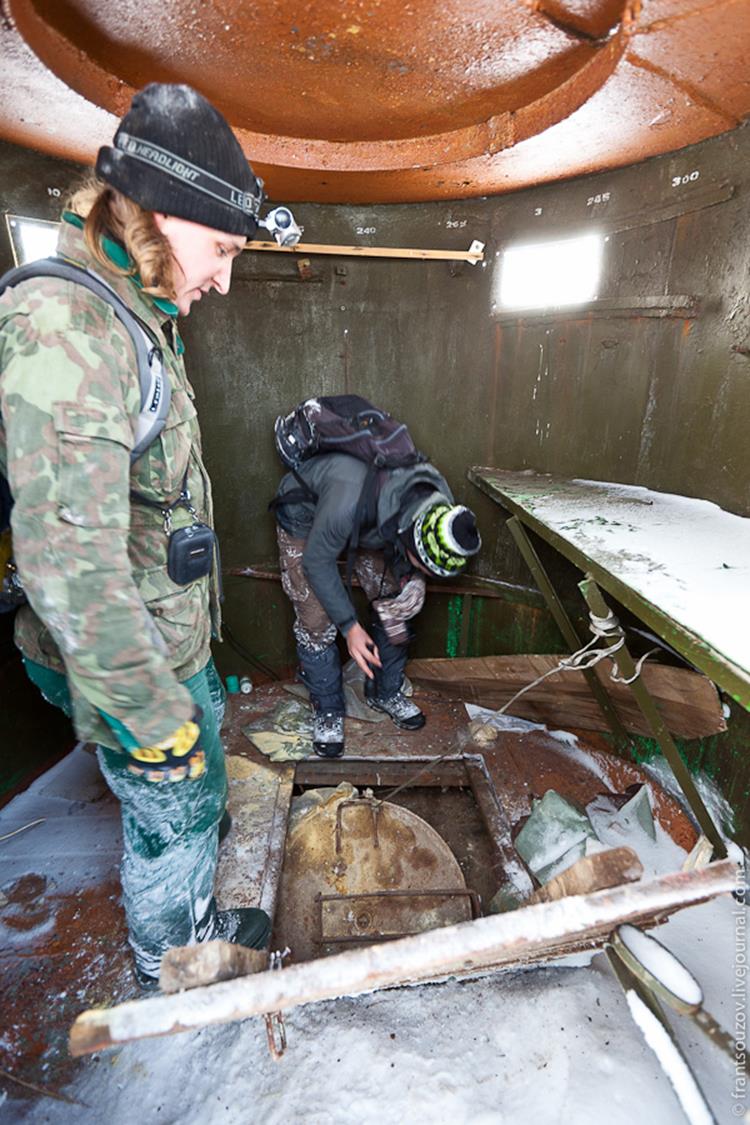
There is a guard post with a machine gun next to it. However, in order to avoid turning off the alarm in the inner security zone every time, an underground passage was built to connect them.
There is a wooden hatch in the floor, and a metal one under it. But, since the building is not standing straight, it can’t be opened.

So, the only thing left is a small unremarkable “shed” at the foot of the hill where we just went down the slope. We come inside.

The stairs leading down.

There is a hermetic door waiting for us and a few service rooms.

We enter one of them. There is a concrete platform suspended from the ceiling on heavy duty shock absorbers 50 cm (approx. 2ft) above the floor.
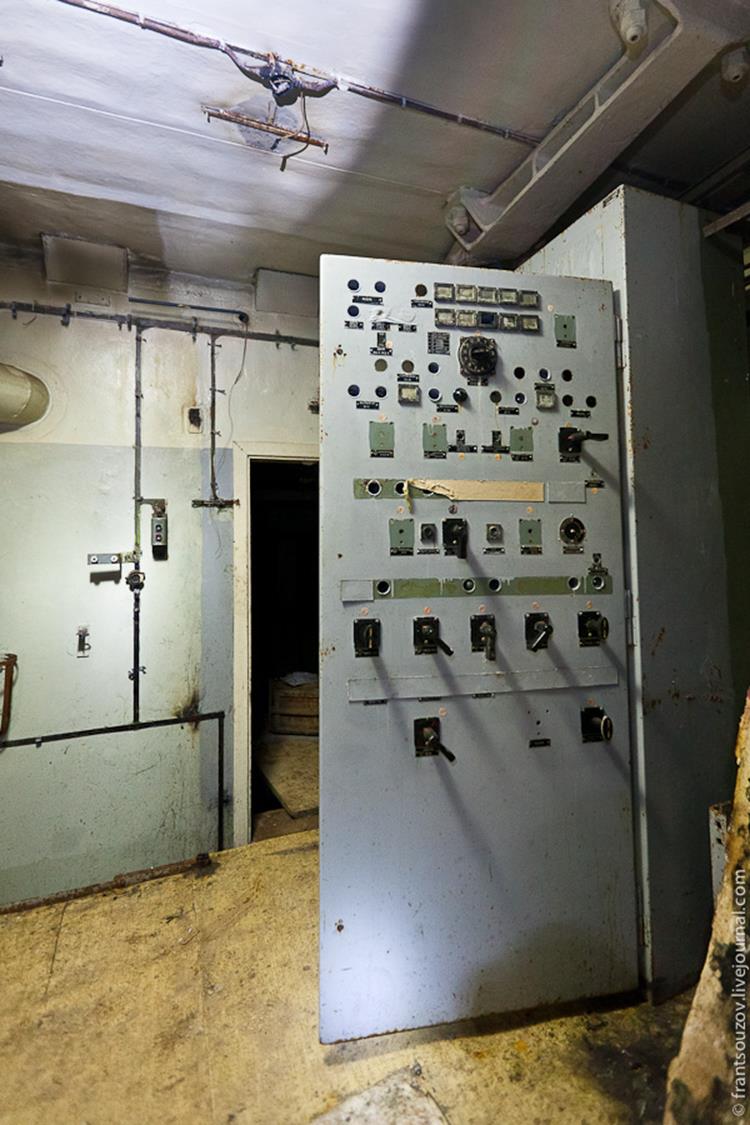
This was done in order to ensure that the equipment in here doesn’t stop functioning as a result of a shock wave.
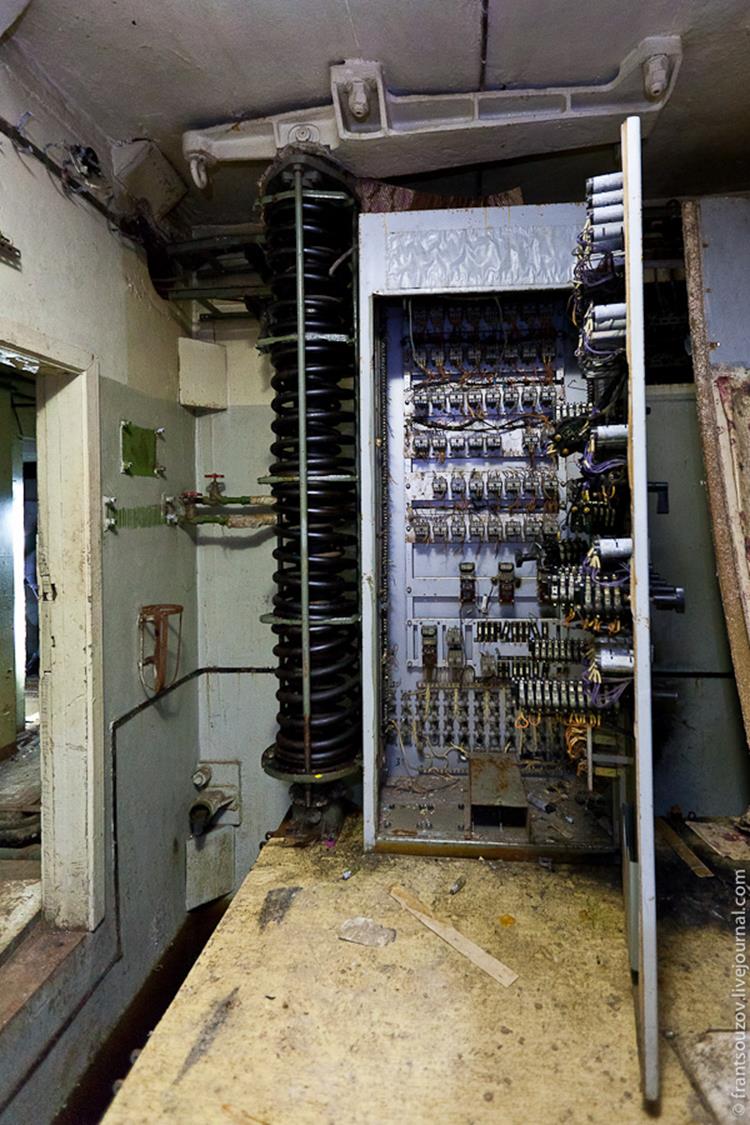
A closer look at a cabinet and one of the shock absorbers. The attachments are very heavy duty. It looks like we are heading the right way.

The platform is suspended above water, and its surface is painted all colors of rainbow with chemicals.

More poterns. We keep walking.
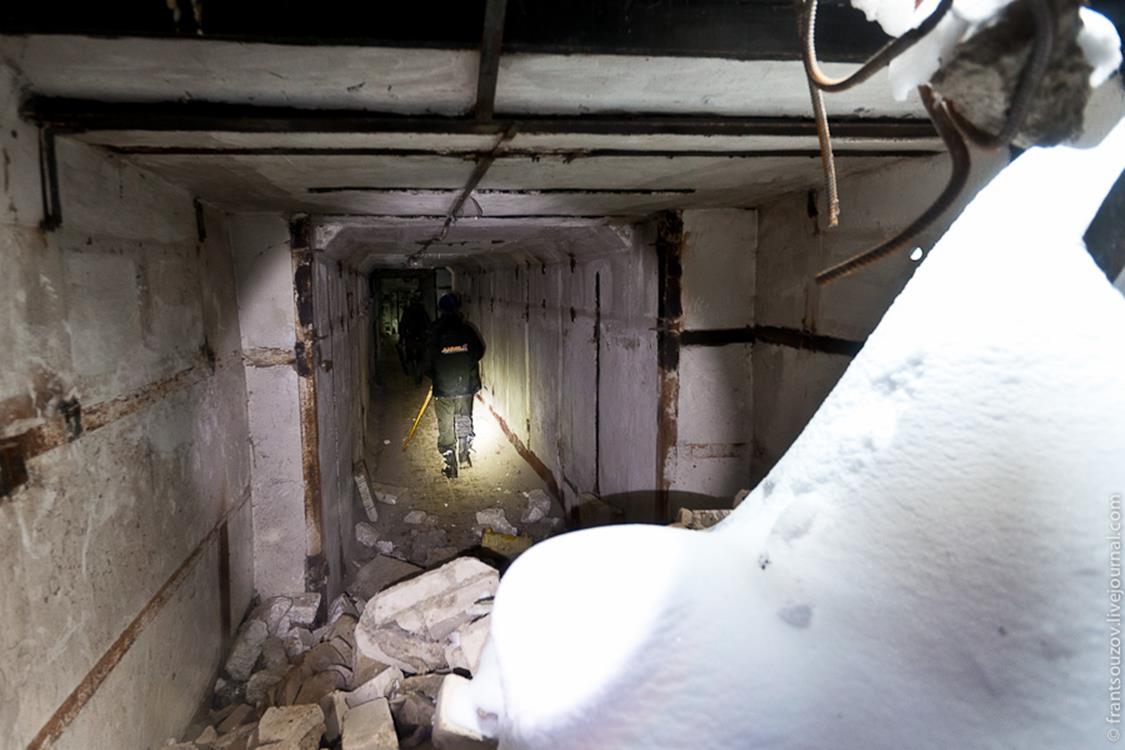
Considerable cooling was needed for maintenance of all the equipment, so there was a huge building with air conditioners and a heating system for the winter near the command center.
In case the conditioner building was destroyed, the cooling of the equipment was switched to independent mode with 35 metric tons of ice generated and stocked in advance, kind of a cold accumulating battery.

The first hermetic door at the end of the hallway. The writing on it says not to get offended if you get caught.

There is an even stronger hermetic door behind the first one that used to be locked with servomotors.
Before the trip we had read that some assholes have installed a homemade trip wire at the entrance, and someone was blown on the mine (you will be able to see it in the video). So the doors should be opened with extreme caution.

There was the third hermetic door after the second one, and then — a bridge leading to the “top” of the control unit (CU).

The CU is in fact a standard missile silo about 40 m (130 ft) deep, and inside it there is a 12-storey metal capsule “building” about 33 m (108 ft) long and 3,3 m (11 ft) in diameter, suspended on vertical and horizontal shock absorbers.

“Holy shit!”
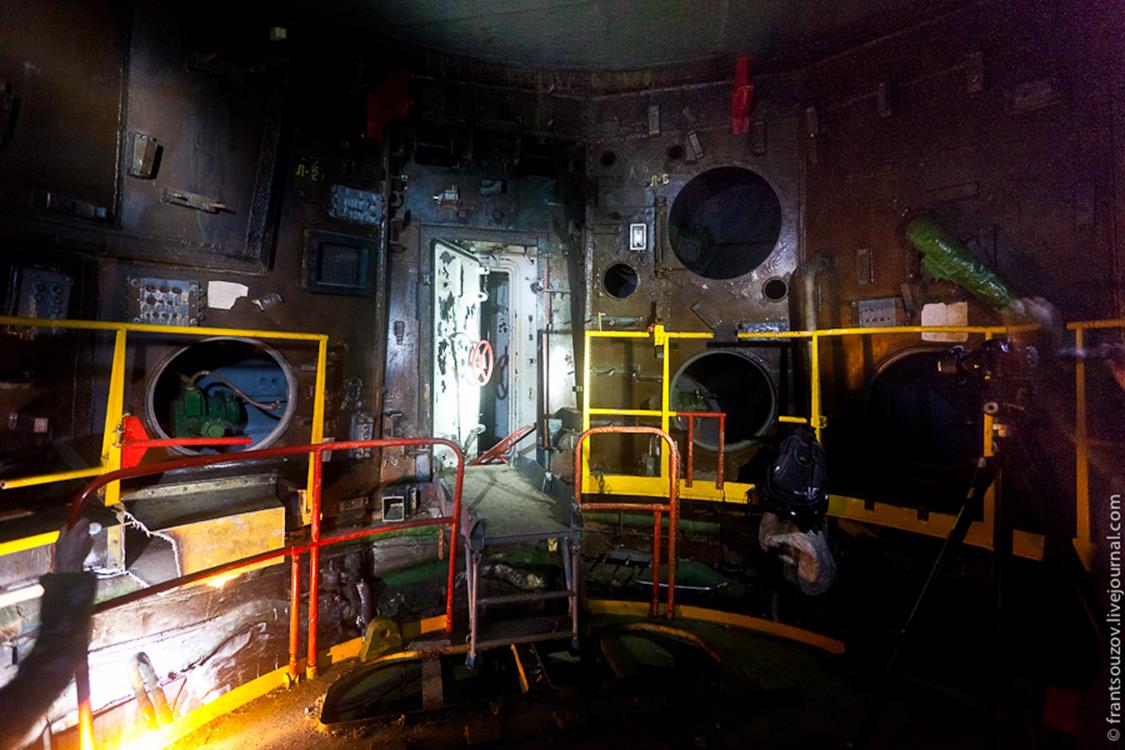
Right now we are on the “roof” of the capsule. There are multiple niches in the walls, technological shafts leading to the surface here and there. Some of them were designed for communication with the “outer world”.

The regiment’s command center was in control of 10 missiles, whose launch silos were located 8—10 km (5—6 miles) apart.
This station was connected by cables with 9 other stations that were part of one division.
The communication with the headquarters, district authorities and Moscow was carried out via an above-ground antenna, an underground antenna and an alternative underground cable antenna 100×100 m (328×328 ft) in size, buried 1 m (3 ft) underground.
The launch could be made from any station of the division, district or from Moscow depending on the situation.

Right beneath my feet are 12 floors of the capsule going deep underground. The height is rather impressive!
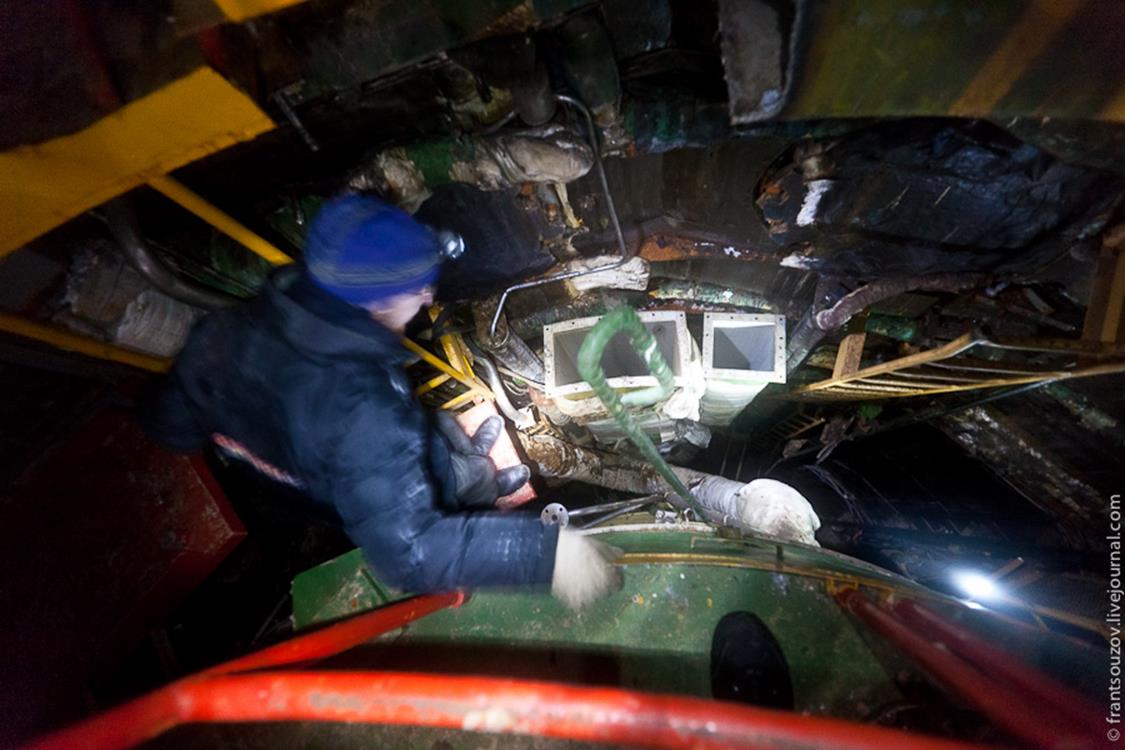
There are multiple ladders on the walls, some are fixed and some have hooks on top — the portable ones.
These are here in case one or a few fixed ones collapse so that the staff would still have an opportunity to get to the surface through the emergency exit hatch.
Well now, we start our descent.

The capsule was manufactured in Leningrad and was delivered to the site already assembled except for the 1st and 2nd sections (they were equipped with diesel generators), which were transported separately in a vertical position.

This huge structure is suspended from the walls on these strong shock absorbing cables.

The third section. Every level is rounded room housing reliable equipment that was able to function regardless of the surrounding conditions. In here, communication devices were once kept.

There is a portable ladder leading down. There was an automatic monitoring and control system in the 4th section.

And this is how the inhabitants of the capsule saw the “outside world” — just a narrow metal path going round the shaft is visible behind the door.

We go further down.

The 5th section also used to house communications equipment.
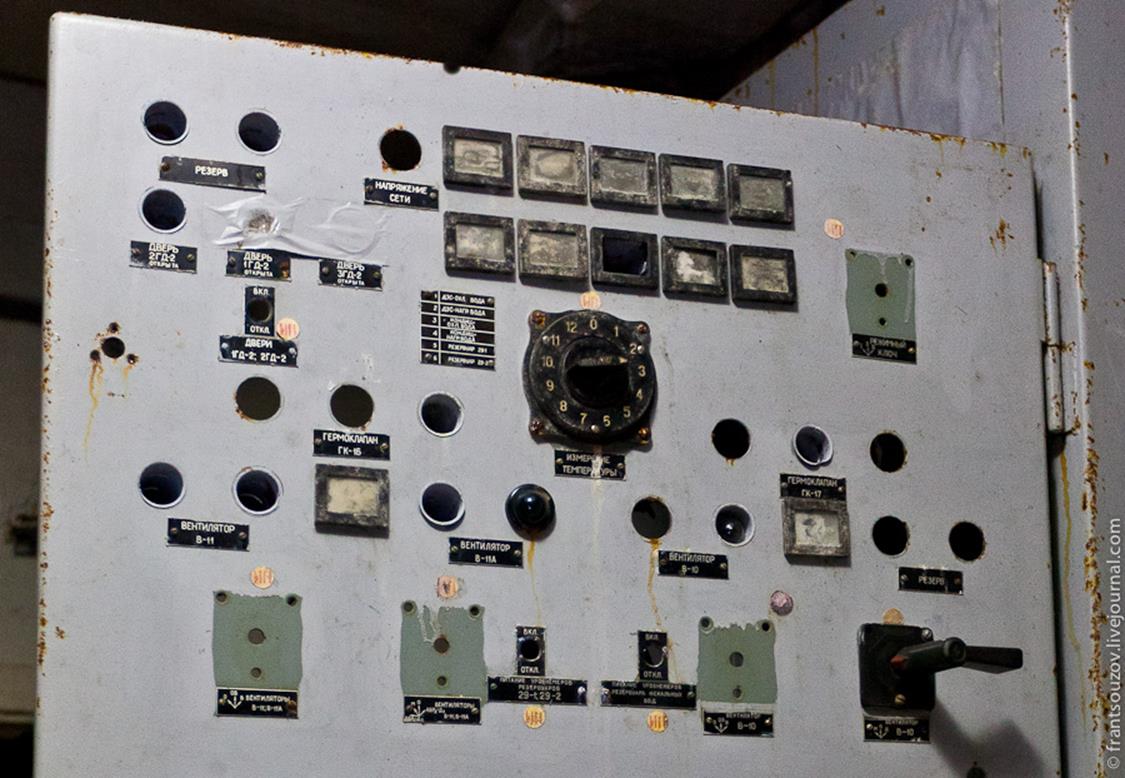
The cabinet filled with equipment.

Down again.
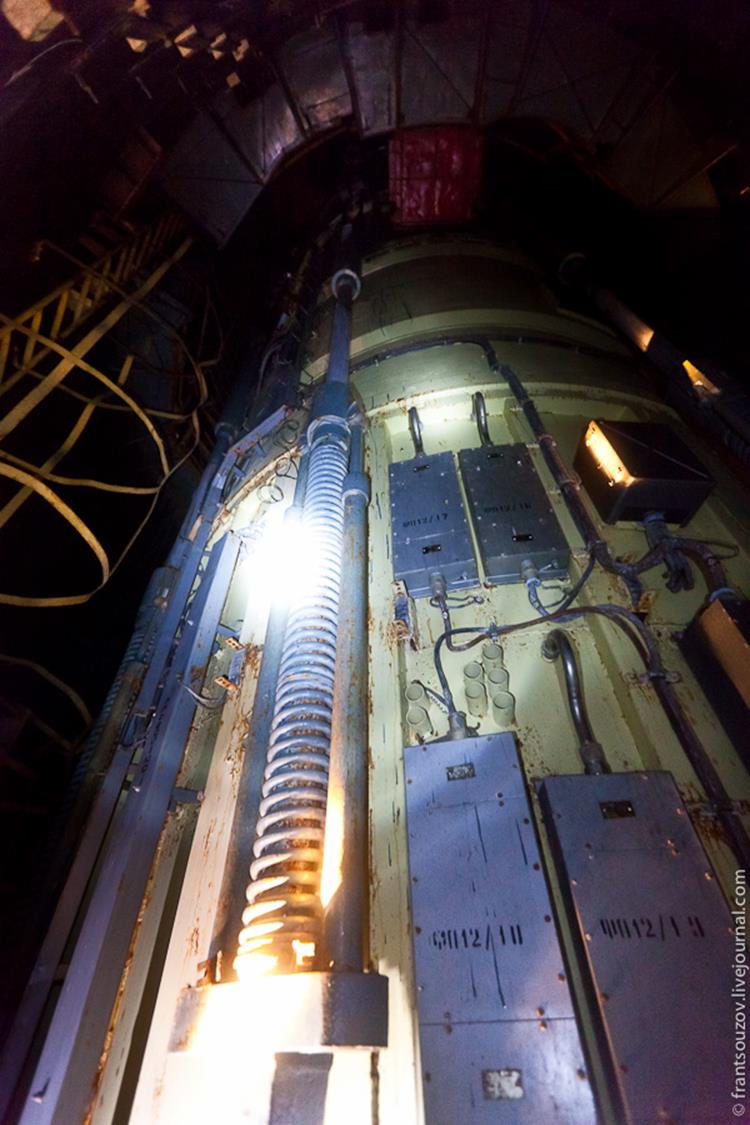
Taking into account the responsibility that was placed on the CU, the requirements were also very strict. The structure was able to withstand a direct nuclear warhead hit.
In this case two officers who were keeping watch (and in case of a real threat of war, and thus increased alert status – three) had an opportunity to buckle up in their seats like on a plane.
The technical excellence of the CU’s design allowed sustaining the life of the staff and guaranteeing the accomplishment of their military mission to launch the missiles in any conditions.
There was even an independent operation mode in case the outer power sources go out.
People could stay underground for up to 45 days. There was a food supply, equipment and other special tools required in emergency situations in the CU.

On the inside of the levels 6, 7 and 8 there was power supply equipment that supported all the objects in the CU, and there were compressed air tanks fixed to the outside.
According to one version, they were meant for the staff who were the “lucky” survivors so that they could retaliate upon the enemy.

According to another version, the compressed (but not liquefied) air was used for controlling the pneumatic mechanisms.

Levels 9 and 10 — the equipment for the operational missile launch.
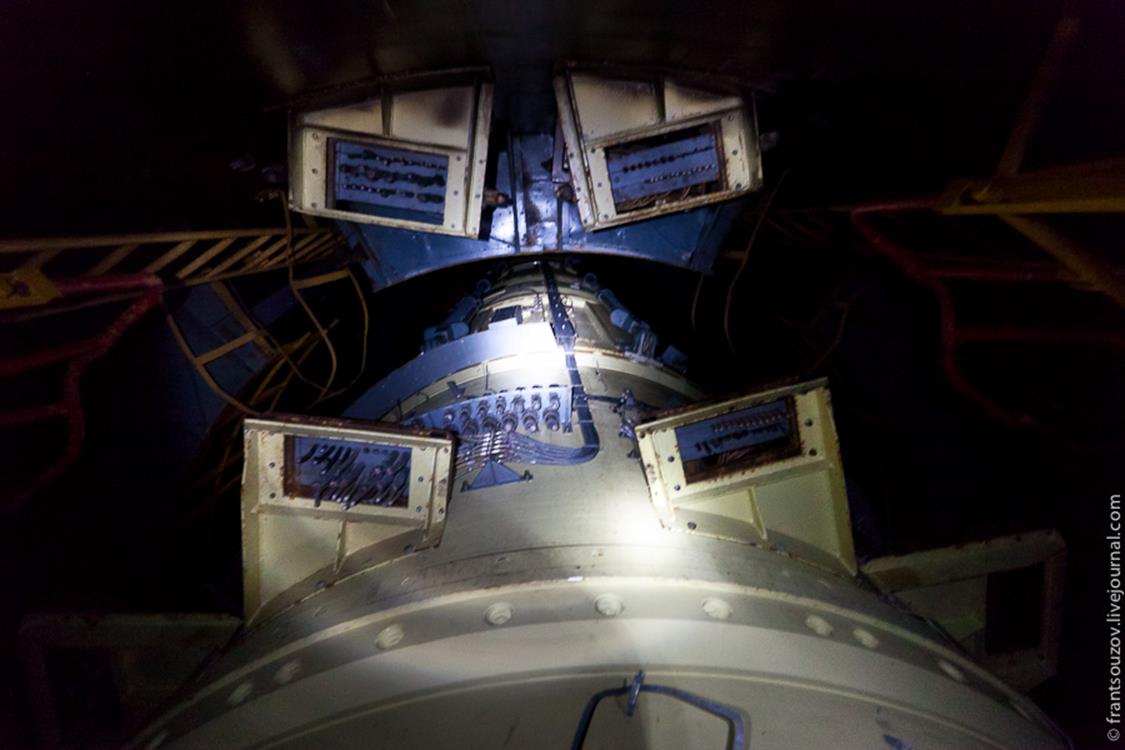
There are miles of cables on the outside; many of them had been cut off.
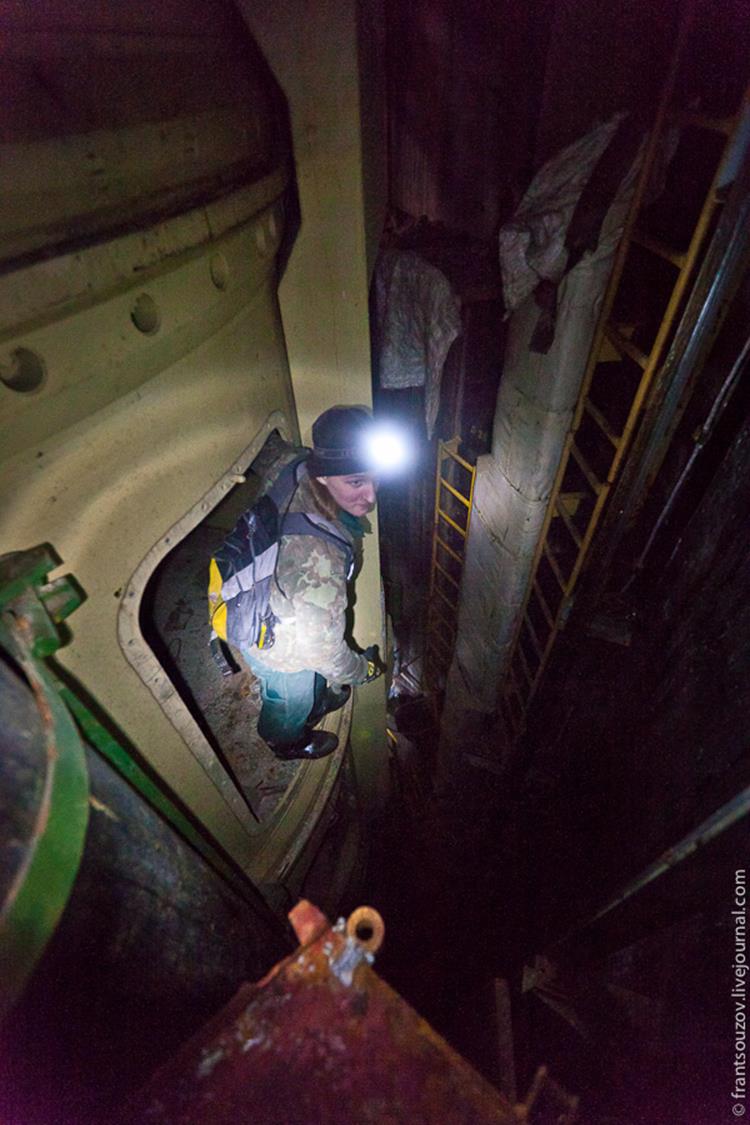
On a closer look, it is possible to see guide rails on the right of the yellow ladder — there used to be an elevator here (you can see it in the mock-up) that could take you to any floor of the capsule.
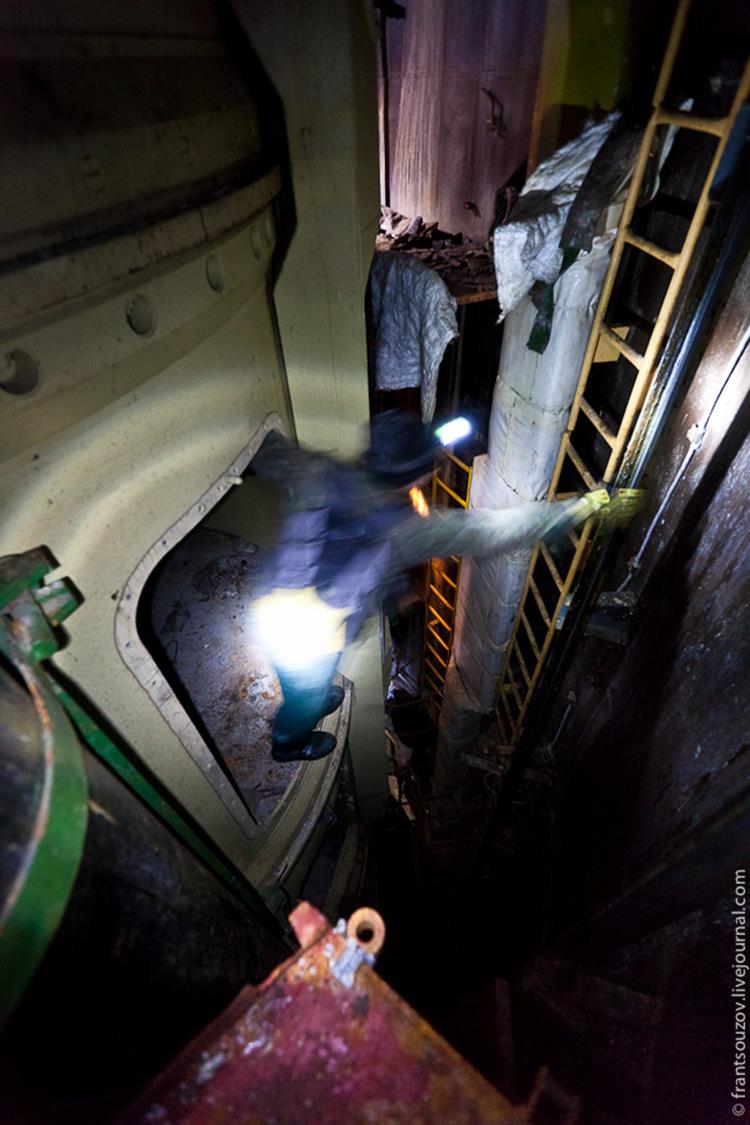
And now, since the elevator is no longer there, you have to move around this way.

We continue our way down.
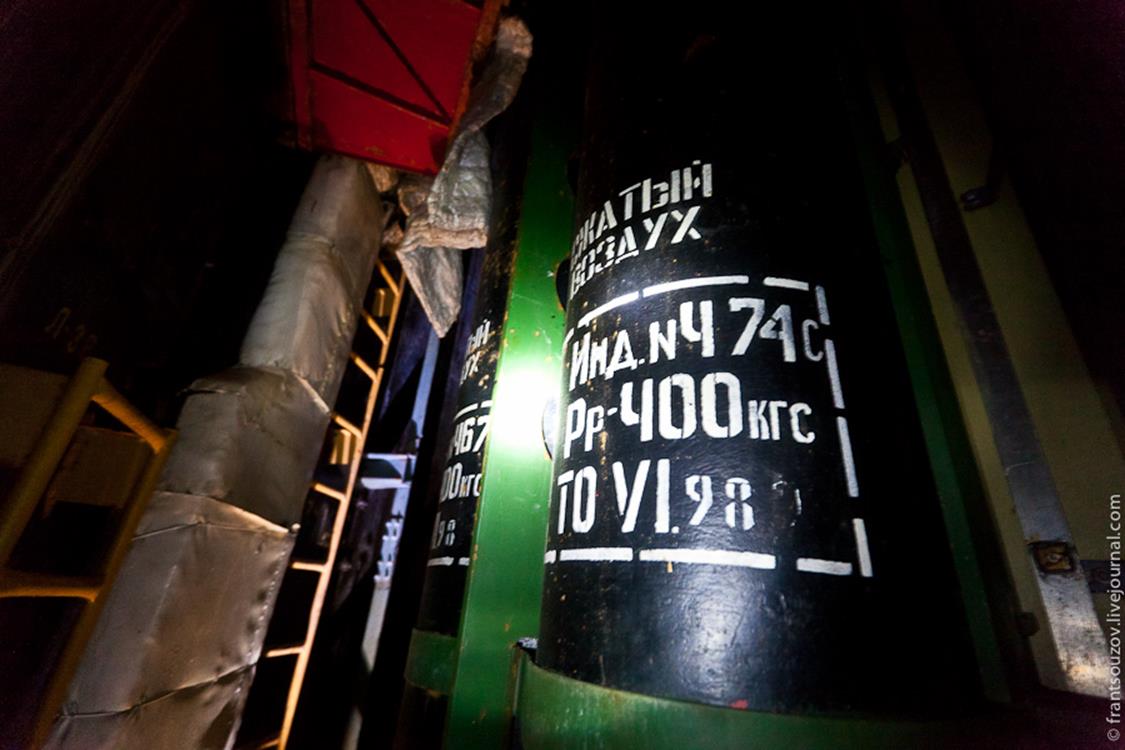
The pressure in the tanks is 400 atmospheres. This is quite a lot!
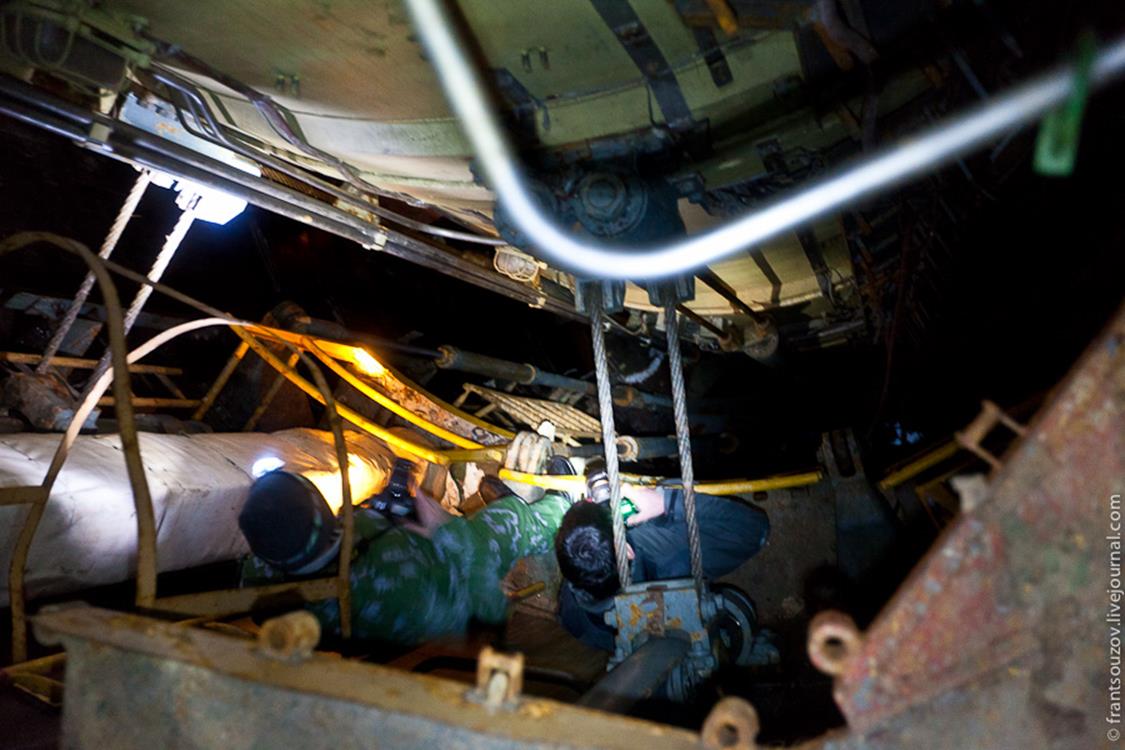
It is already possible to see the bottom. We are thinking of a way to go even lower.

And finally, this is almost the very bottom. You can see multiple supporting shock absorbers, and there are fixtures and trash scattered on the floor.
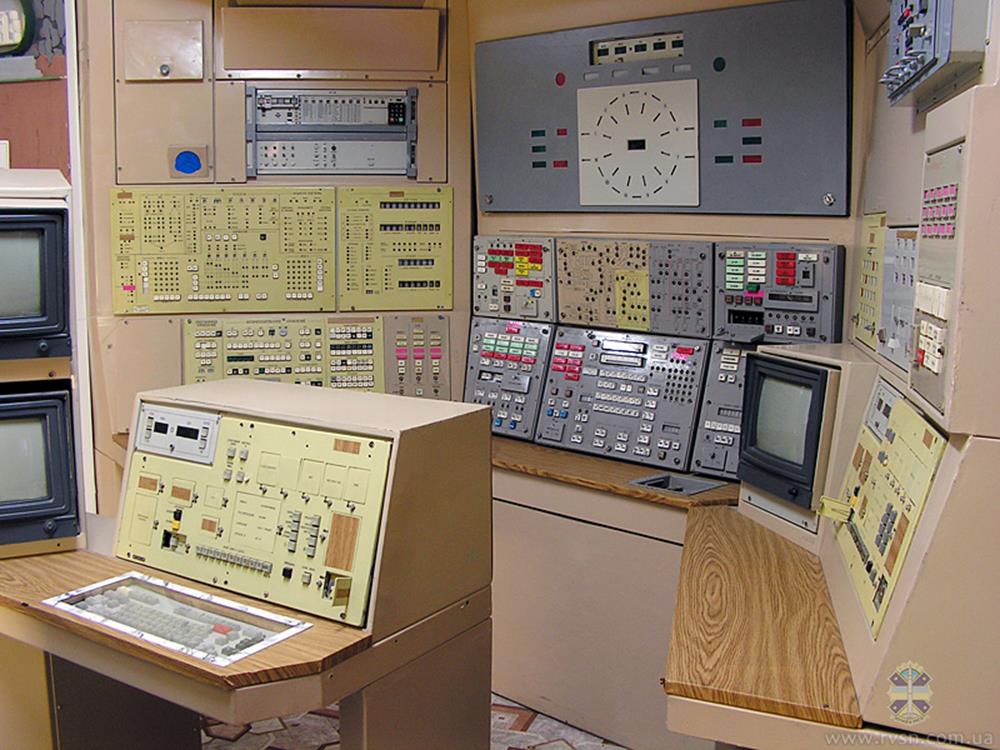
The 11th level — the command unit with action posts, remote monitoring and control console for the communications and the automated combat direction system.
This is how it all used to look (a photo from the site of the museum).
The last, 12th level, houses a day room where the duty staff could get some rest.
Three combat crews of the command unit of the missile regiment were on duty 24 hours a day, for 6 hours at a time.
During this time they were bound to watch every change on the screen of the combat control equipment.
At least 2 people were needed to launch a missile, as it was required to turn two unlocking keys simultaneously on the main and the secondary control consoles.

This is how the CU looked from the surface — the 120 metric tons cap provided hermetic sealing and protection from the injuring factors of nuclear weapons.
There are a few technological holes beside it, an emergency exit hatch and the communication antennas.

A backup satellite communications antenna near the cap of the missile silo at the Strategic Missile Troops museum.
In case of destruction of the site the missile could be launched in a few backup ways:
– via cable communication from another PCU.
– if the cable is damaged, via satellite communication from another CU through this antenna. (In the photo)
– if this satellite antenna is damaged, there is another camouflaged backup antenna, large in diameter.
– if all the communication lines were damaged, the launch could be carried out manually, straight from the underground missile silo.
There is a hatch with an electronic numeric lock.
An officer could descend into the silo through the hatch and give the command to launch.
The launch was carried out 5 minutes after the command.

Another antenna — it is the one on the photo — appeared after a remodeling of the complex and was designed for the command missile launch signal reception. (The Dead Hand — a Doom’s Day machine implementation).
In case of a massive attack the system was able to make a decision about a retaliatory strike on its own, with little or no human involvement. After receiving a warning signal about a missile attack, the leaders of the country could activate the Dead Hand and calmly wait for further events, being absolutely sure that even the destruction of all those who have the power to order a response attack would not be able to prevent a retaliation act.
There was a similar system of transmitting the launch order in the US – the Emergency Rocket Communications System.
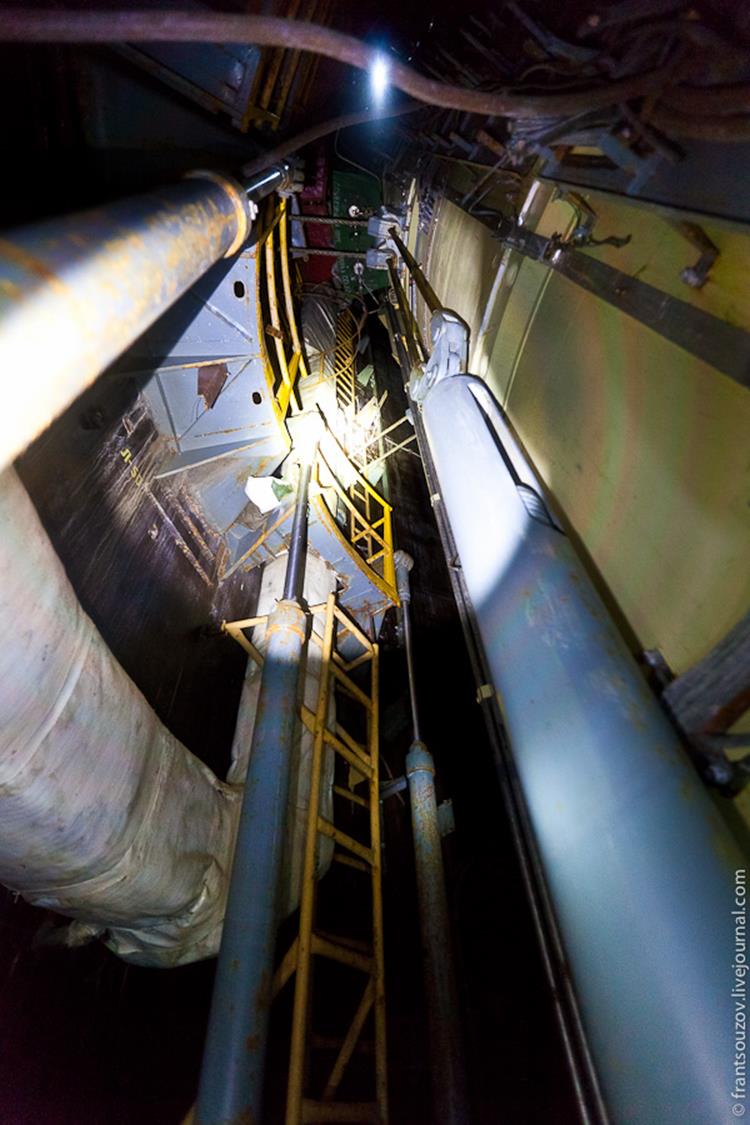
The view from the bottom.
125 metric tons. 33 meters. 45 days of autonomous operation regardless of what is going on at the surface.
And this enormous, 12-storey tall structure is beneath me, suspended on cables.
Just when you realize, how much brainpower was invested into its design, how much labor and money – into its construction, and all this was done in order to guard the peace on our planet…
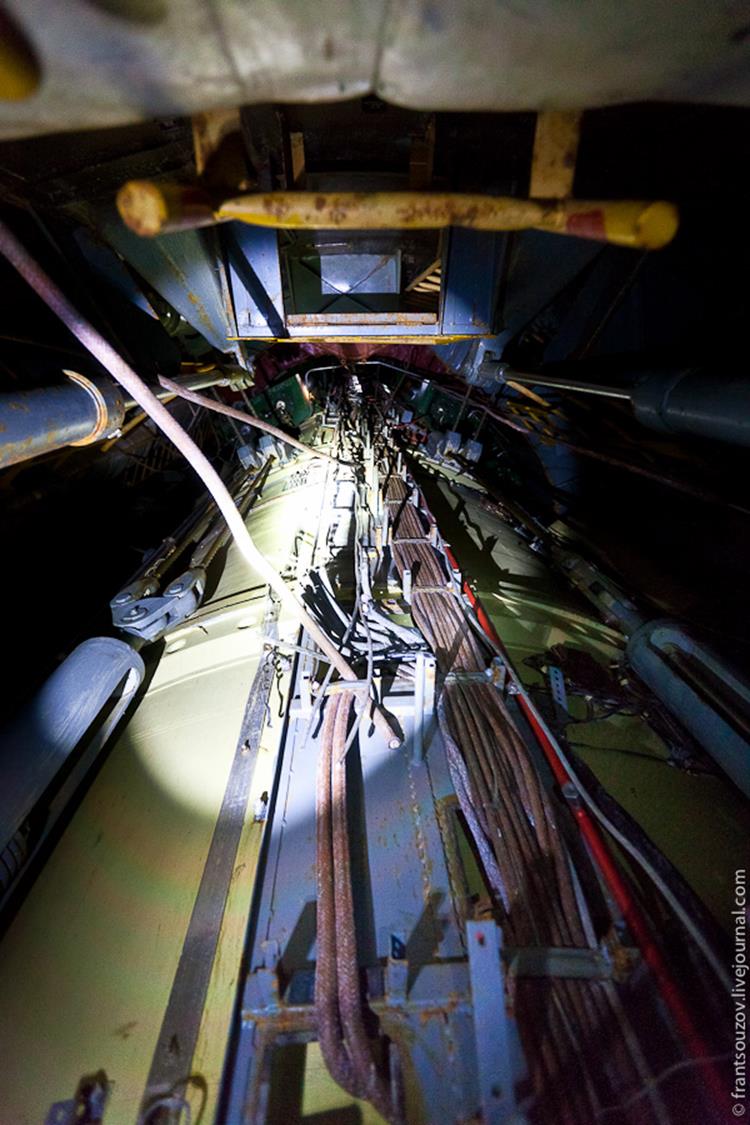
And finally – a portrait of the whole group.
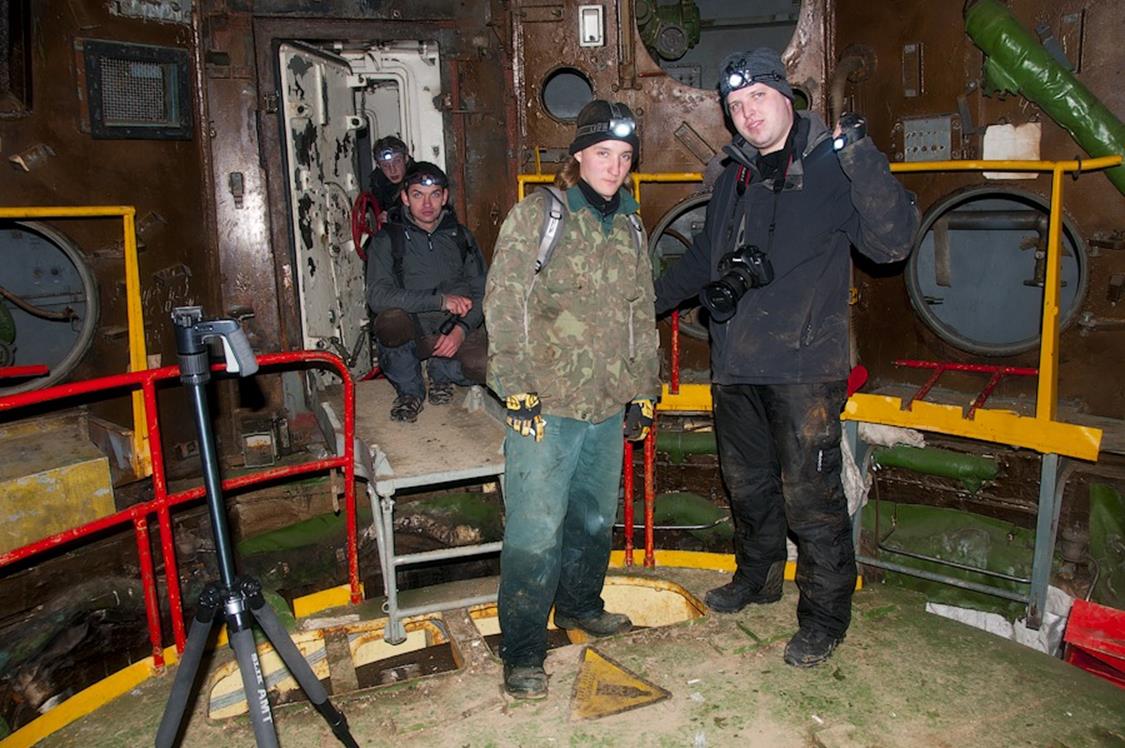
Some time ago this site was top secret. It was basically impossible to get here. Now it is simply abandoned…
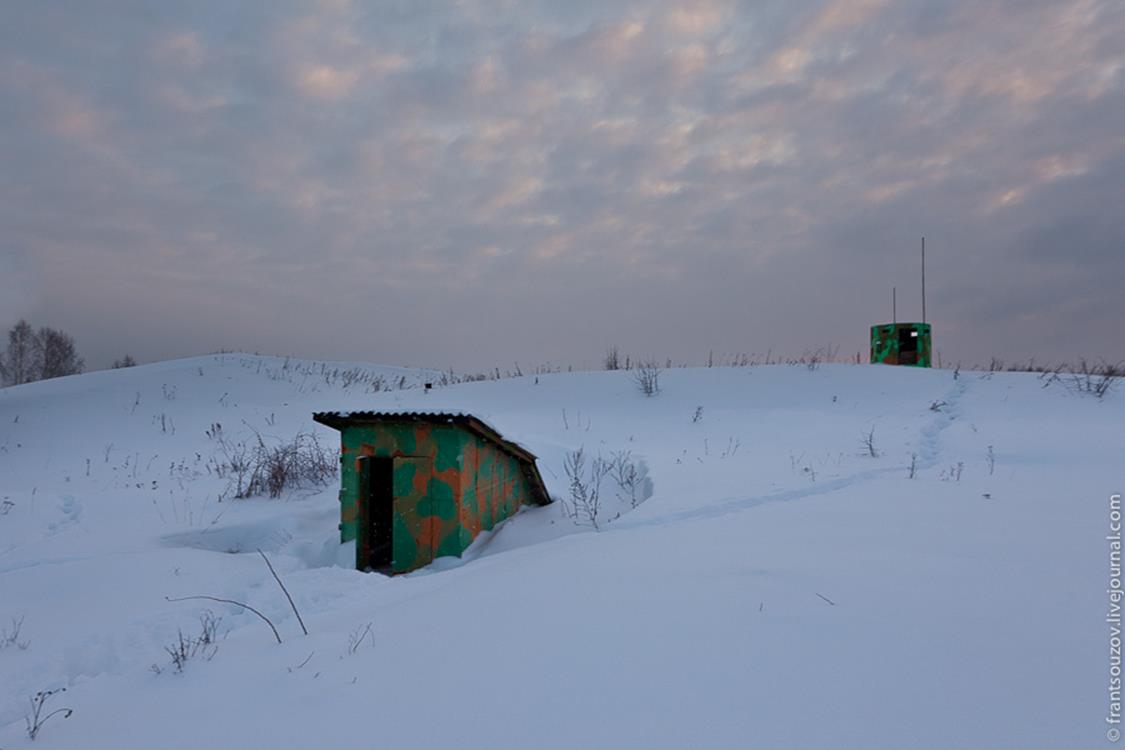
So, as we found out, a small unremarkable “shed” can be hiding a lot of secrets sometimes.
Images by Frantsouzov, reproduced with permission






